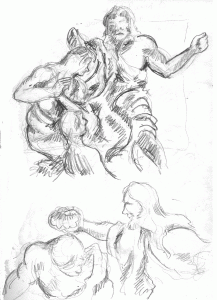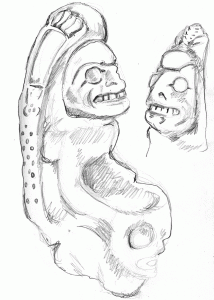I’m ashamed to say that I’m late in my appreciation for the great Dizzy Gillespie. For the longest time when my knowledge of Jazz pretty much consisted of the “basics” like Louis Armstrong, Duke Ellington, Benny Goodman and Charlie Parker, he was one of the other musicians… Specifically the one I only remembered because of the puffed cheeks and the funny looking horn. It was only later when I realized and appreciated just what he could really do with the thing.
To make up for that let’s watch him have a really good time playing “St. Louis Blues” with the Electric Mayhem.









